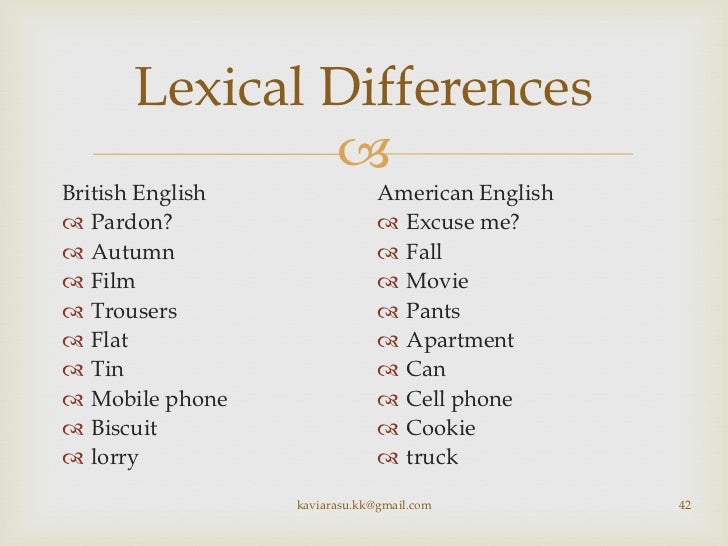 When various linguistic differences accumulate in a particular geography region, the language spoken has its own character. Each version of the language is referred to as a regional dialect.
When various linguistic differences accumulate in a particular geography region, the language spoken has its own character. Each version of the language is referred to as a regional dialect.How dialects develop is illustrated by the pronunciation of words with an ''r'' different parts of United States. As early as the eighteen century, the British is southern England were dropping their r's before consonants and at the end of words.
In the following sections we discuss the different linguistic levels at which dialects may vary:
- Phonological Differences
 A comparison of the r- drop and other dialects illustrates the many phonological differences among dialects of American English. these variations created difficulties for us, where we wished to illustrate the different sounds of English by using key words in which the sounds occur.
A comparison of the r- drop and other dialects illustrates the many phonological differences among dialects of American English. these variations created difficulties for us, where we wished to illustrate the different sounds of English by using key words in which the sounds occur.
The pronunciation of British English differs in systematic ways from pronunciationd in many dialects of American English. 48 percent of the american pronounced the mid consonants in luxury as voiceless, whereas 96 percent of British pronounced them as voiced.
The most consistent difference occurred in the placement of primary stress, with most Americans putting stress on the first syllable and most British on the second or third in polysyllabic words like; cigarette, applicable, formidable and laboratory.
As is true the origin of certain American dialects, many of the regional dialects of British English, such as the West Country dialect, the East Anglia ialect, amd the Yorkshire dialect, are not derivations from the ''standard'' sialect spoke in London, but are direct descendants of earlier varieties that existed alongside London English as far back as the eleventh century.
English is the most widely spoken language in the world. It's the national language of several countries.
Regional dialects may differ in the words people use for the same object, as well as in phonology.
if you ask for a tonic in Boston, you will get a drink called soda or soda pop in Los Angeles.
- Syntactic Differences
Dialects can also be distinguished by systematic syntactic differences. in most American dialects, sentences may be conjoined as follows:
John will eat and Mary will eat. ---- John and <mary will eat.
In the Ozark dialect of southern Missouri, the following conjoining is also possible:
John will eat and Mary will eat. ---- John will eat and Mary.
Most dialects of English allow deletion of only the fist conjunct and in those dialects Jonh will eat and Mary is ungrammatical.
speakers of some American dialects say Have them come early! where others would say Have them to come early! Many speakers of the latter dialect also exhibit double modal auxiliary verbs, so that expression like He might could do irtor You might should go home are grammatical. Most dialects of English may contain no more than one modal.
In some American English dialects, the pronoun I occurs when ME would be used ini other dialects. This difference is a synntactically conditioned morphological differences.
In some American English dialects, the pronoun I occurs when ME would be used ini other dialects. This difference is a synntactically conditioned morphological differences.
Between you and I. ---- Between you and me.
 The use of I in this structures is only permitted in a joined NP (noun phrase), as the starred (ungrammatical) sentence shiws.
The use of I in this structures is only permitted in a joined NP (noun phrase), as the starred (ungrammatical) sentence shiws.
Despite such ifferences, we are still able to understand speakers of other English dialects. Although regional dialects differ in pronunciation, vocabulary and syntactic rules, the differences are minor when compared with the totality of the grammar. Dialects typically share most rules and vocabulary which explains why the dialects of a language are mutually intelligible.
Varieties of Regional Dialects in the U.S.
 Some differences in U.S. regional dialects may be traced to the dialects spoken by colonial settlers from England. Those from southern England spoke one dialect and those from the north spoke another. In addition, the colonists who maintained close contact with England reflected the changes occurring in British English, while earlier forms were preserved among Americans who spread westward and broke communication with the Atlantic coast. The study of regional dialects has produced dialect atlases, with dialect maps showing the areas where specific dialect characteristics occur in the speech of the region. A boundary line called an isogloss delineates each area.
Some differences in U.S. regional dialects may be traced to the dialects spoken by colonial settlers from England. Those from southern England spoke one dialect and those from the north spoke another. In addition, the colonists who maintained close contact with England reflected the changes occurring in British English, while earlier forms were preserved among Americans who spread westward and broke communication with the Atlantic coast. The study of regional dialects has produced dialect atlases, with dialect maps showing the areas where specific dialect characteristics occur in the speech of the region. A boundary line called an isogloss delineates each area.
No hay comentarios.:
Publicar un comentario